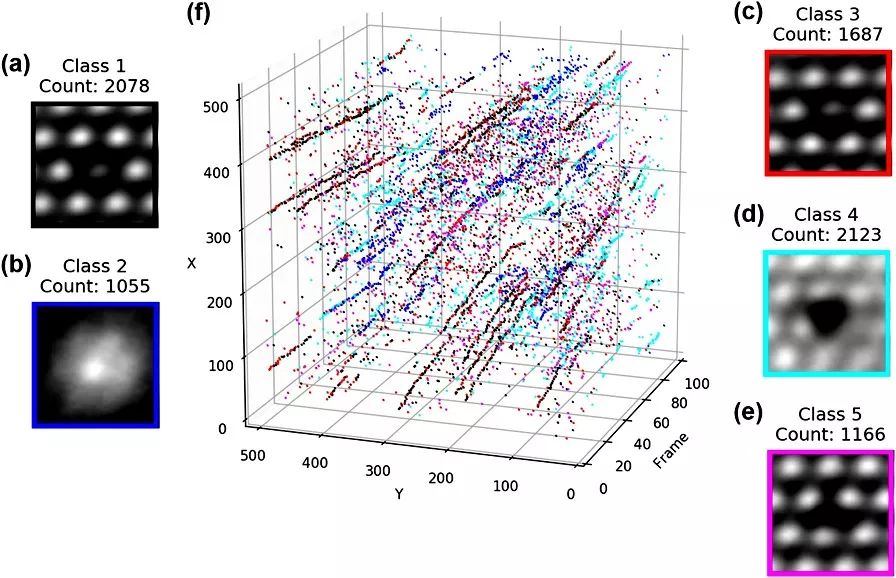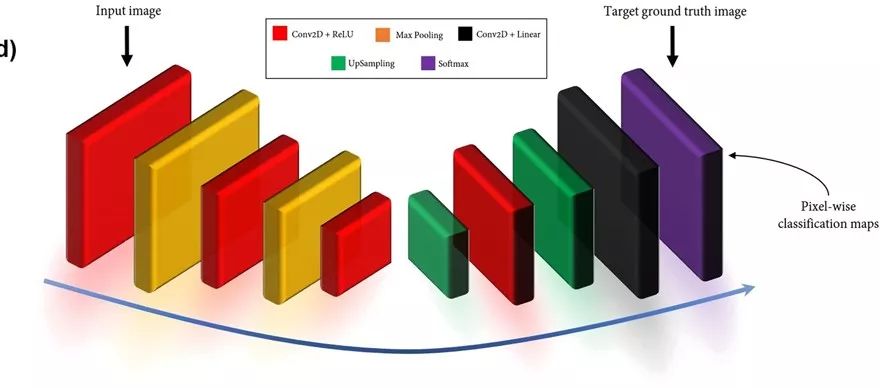科技工作者之家
科技工作者之家APP是专注科技人才,知识分享与人才交流的服务平台。
科技工作者之家 2019-04-02
来源:知社学术圈
扫描透射电子显微镜(STEM)的新发展使得在原子尺度上实时可视化材料中的固态转变,包括电子束和温度导致转变成为可能。然而,尽管高分辨率数据的采集能力在不断增强,从中获取转变过程的热力学和动力学,以及单个缺陷的动力学和相互作用等信息却十分有限。这是由于利用手动非原位的方式来分析数据存在局限性所致。
来自美国橡树岭国家实验室的Sergei V. Kalinin(本刊副主编)和Maxim Ziatdinov共同领导的团队,提出了一种基于深度学习的方法,用于分析Mo掺杂WS2.的扫描透射电子显微镜(STEM)图像中晶格结构的动态转换的“电影”。他们首先训练了一个深度学习神经网络使其能够在STEM图像中识别出不同的晶格点缺陷,经过训练的深度学习模型可在几秒钟内从原始STEM数据中提取数千个晶格缺陷。然后采用高斯混合模型,对检测到的缺陷结构进行无监督分类,找出分类结果与特定的物理结构的联系。该方法可以从STEM数据中识别主要点缺陷及其特征统计行为,分析所选种类缺陷的扩散,研究复杂缺陷不同组态间的转化路径及转换概率。他们的方法可在原子水平上研究材料中的点缺陷动力学和固态反应。
该文近期发表于npj Computational Materials 5: 12 (2019),英文标题与摘要如下,点击左下角“阅读原文”可以自由获取论文PDF。

Deep learning analysis of defect and phase evolution during electron beam-induced transformations in WS2
Artem Maksov, Ondrej Dyck, Kai Wang, Kai Xiao, David B. Geohegan, Bobby G. Sumpter, Rama K. Vasudevan, Stephen Jesse, Sergei V. Kalinin & Maxim Ziatdinov
Recent advances in scanning transmission electron microscopy (STEM) allow the real-time visualization of solid-state transformations in materials, including those induced by an electron beam and temperature, with atomic resolution. However, despite the ever-expanding capabilities for high-resolution data acquisition, the inferred information about kinetics and thermodynamics of the process, and single defect dynamics and interactions is minimal. This is due to the inherent limitations of manual ex situ analysis of the collected volumes of data. To circumvent this problem, we developed a deep-learning framework for dynamic STEM imaging that is trained to find the lattice defects and apply it for mapping solid state reactions and transformations in layered WS2. The trained deep-learning model allows extracting thousands of lattice defects from raw STEM data in a matter of seconds, which are then classified into different categories using unsupervised clustering methods. We further expanded our framework to extract parameters of diffusion for sulfur vacancies and analyzed transition probabilities associated with switching between different configurations of defect complexes consisting of Mo dopant and sulfur vacancy, providing insight into point-defect dynamics and reactions. This approach is universal and its application to beam-induced reactions allows mapping chemical transformation pathways in solids at the atomic level.

来源:zhishexueshuquan 知社学术圈
原文链接:http://mp.weixin.qq.com/s?__biz=MzIwMjk1OTc2MA==&mid=2247496521&idx=4&sn=292dbb68d2eee66a07b005f1c39cec60&chksm=96d40db6a1a384a0bee1fdfb9d68590525e678d3b229b6d1d74090c18044825aba8190508dc5&scene=27#wechat_redirect
版权声明:除非特别注明,本站所载内容来源于互联网、微信公众号等公开渠道,不代表本站观点,仅供参考、交流、公益传播之目的。转载的稿件版权归原作者或机构所有,如有侵权,请联系删除。
电话:(010)86409582
邮箱:kejie@scimall.org.cn

原位电子显微学探索固体中的离子迁移行为(二)
轴向枪电子束熔炼炉
电子束辐射法
电子束加热

太赫兹脉冲啁啾操控电子束实现更短且更稳定的相对论电子束
电子束检测
电子束焊
电子束诱导电流法
平面电子束熔炼炉
电子束偏转